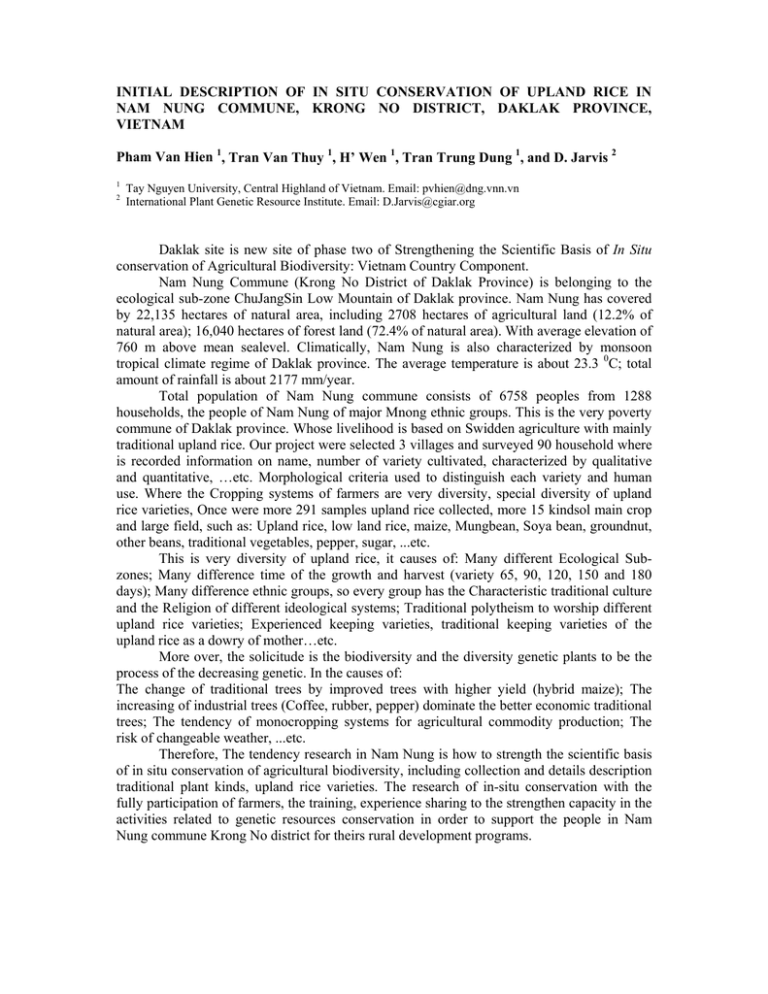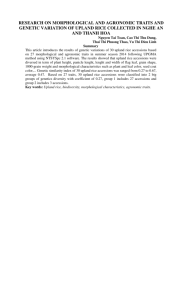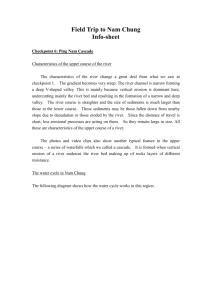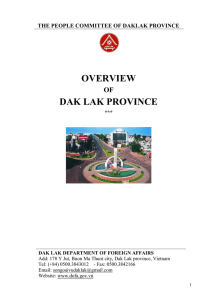INITIAL DESCRIPTION OF IN SITU CONSERVATION OF UPLAND RICE IN
advertisement

INITIAL DESCRIPTION OF IN SITU CONSERVATION OF UPLAND RICE IN NAM NUNG COMMUNE, KRONG NO DISTRICT, DAKLAK PROVINCE, VIETNAM Pham Van Hien 1, Tran Van Thuy 1, H’ Wen 1, Tran Trung Dung 1, and D. Jarvis 2 1 2 Tay Nguyen University, Central Highland of Vietnam. Email: pvhien@dng.vnn.vn International Plant Genetic Resource Institute. Email: D.Jarvis@cgiar.org Daklak site is new site of phase two of Strengthening the Scientific Basis of In Situ conservation of Agricultural Biodiversity: Vietnam Country Component. Nam Nung Commune (Krong No District of Daklak Province) is belonging to the ecological sub-zone ChuJangSin Low Mountain of Daklak province. Nam Nung has covered by 22,135 hectares of natural area, including 2708 hectares of agricultural land (12.2% of natural area); 16,040 hectares of forest land (72.4% of natural area). With average elevation of 760 m above mean sealevel. Climatically, Nam Nung is also characterized by monsoon tropical climate regime of Daklak province. The average temperature is about 23.3 0C; total amount of rainfall is about 2177 mm/year. Total population of Nam Nung commune consists of 6758 peoples from 1288 households, the people of Nam Nung of major Mnong ethnic groups. This is the very poverty commune of Daklak province. Whose livelihood is based on Swidden agriculture with mainly traditional upland rice. Our project were selected 3 villages and surveyed 90 household where is recorded information on name, number of variety cultivated, characterized by qualitative and quantitative, …etc. Morphological criteria used to distinguish each variety and human use. Where the Cropping systems of farmers are very diversity, special diversity of upland rice varieties, Once were more 291 samples upland rice collected, more 15 kindsol main crop and large field, such as: Upland rice, low land rice, maize, Mungbean, Soya bean, groundnut, other beans, traditional vegetables, pepper, sugar, ...etc. This is very diversity of upland rice, it causes of: Many different Ecological Subzones; Many difference time of the growth and harvest (variety 65, 90, 120, 150 and 180 days); Many difference ethnic groups, so every group has the Characteristic traditional culture and the Religion of different ideological systems; Traditional polytheism to worship different upland rice varieties; Experienced keeping varieties, traditional keeping varieties of the upland rice as a dowry of mother…etc. More over, the solicitude is the biodiversity and the diversity genetic plants to be the process of the decreasing genetic. In the causes of: The change of traditional trees by improved trees with higher yield (hybrid maize); The increasing of industrial trees (Coffee, rubber, pepper) dominate the better economic traditional trees; The tendency of monocropping systems for agricultural commodity production; The risk of changeable weather, ...etc. Therefore, The tendency research in Nam Nung is how to strength the scientific basis of in situ conservation of agricultural biodiversity, including collection and details description traditional plant kinds, upland rice varieties. The research of in-situ conservation with the fully participation of farmers, the training, experience sharing to the strengthen capacity in the activities related to genetic resources conservation in order to support the people in Nam Nung commune Krong No district for theirs rural development programs.






